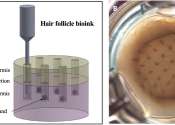New insights into Zebra mussel attachment fibers offer potential solutions to combat invasive species
A recent study from researchers in Canada and Germany has revealed that an unlikely event, occurring over 12 million years ago, played an important role in shaping one of Canada's most damaging invasive species.









